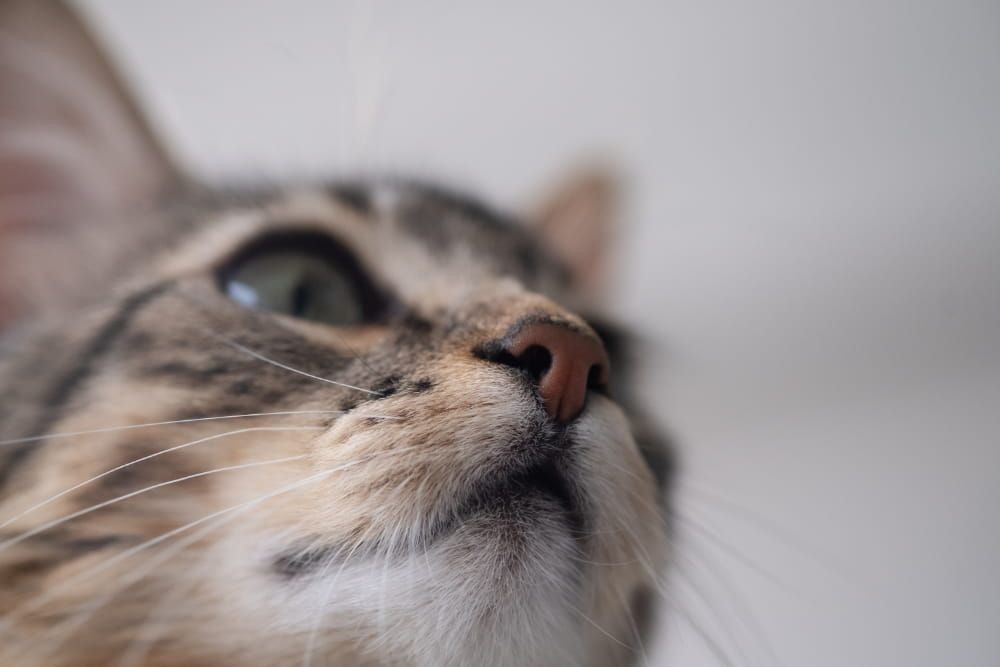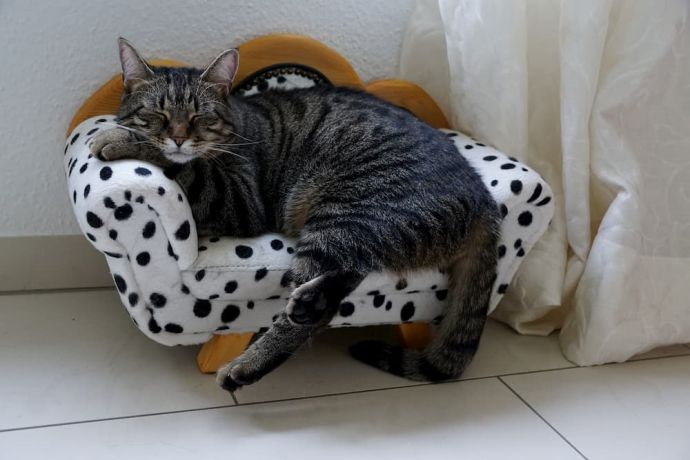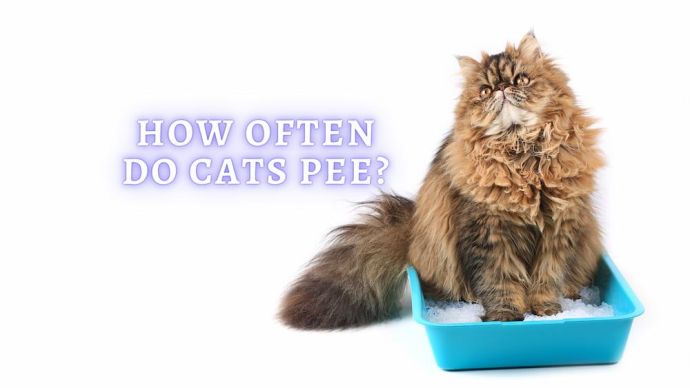How long can a Cat go without Water?
Written by:
Author: Seb Jenkins
Seb is a professional SEO writer with a degree in Journalism, he has five years of experience in writing and editing. Seb specializes in topics like dog and cat breeds, aquarium guides, and pet care. He is passionate about educating and entertaining animal owners worldwide. In his spare time, Seb enjoys writing fiction novels.
View all 83 articlesLearn about our editorial process and veterinary review board.
Reviewed by:
Veterinary review
by Dr. Edele Grey
Dr. Edele Grey is a veterinary surgeon with seven years of experience. She professionally works mostly with horses but has treated pets of all sizes including terrapins, llamas, and others. Dr. Grey graduated with honors from the University College Dublin, Ireland, has completed further education in Equine Sports Medicine. In her free time, she enjoys writing about pet ownership and educating people about veterinary care of animals and preventing disease.
View all 10 articlesLearn about our veterinary review board
Viewed: 357
Updated on: 06/08/2023
While there’s no defined optimal daily water requirement for domestic cats (Felis silvestris catus), the current recommendation is for your kitty to have fresh water available at all times to maintain hydration. A small number of studies have been performed dating back to the 1950s, though much more research is needed to determine our furry friends’ hydration requirements. Read on to learn what’s currently known about cats’ water requirements…
Water is considered an essential nutrient due to its multiple roles in maintaining normal physiological functions and waste elimination. Your kitty’s requirements aren’t static, and their hydration balance is a dynamic process between water losses and intake. While kitties don’t sweat the same way humans do, they lose water through breathing, paw sweat, urine, saliva, and poop.
Did you know that up to 67% of your kitty’s body weight is water?! [1] This will depend on many things, including your pet’s hydration level, weight and body fat levels.
I’m often asked by cat parents how to get their pets to drink more or to be sure they’re drinking enough to maintain their health and hydration. Water is needed for regulating body temperature and maintaining optimal digestion. We tend to think of cats as hating water, but this isn’t necessarily true; the modern domestic cat developed in the Middle and Near East. [2] Part of their evolution took place within arid, desert conditions, which lead to their having a highly efficient urinary system to conserve water. This means that your cat may not need to drink as much as we might expect if we compare it to a dog or even a humans.
One study in 1959 postulated that the domestic cat can actually survive without excess water aside from that within specific diets – pets with dried kibble can’t survive without an extra source. [3]
The water intake of indoor kitties is relatively easy to monitor. Still, if your kitty is indoor/outdoor, it can be challenging to assess their water intake as they may drink outdoors, get extra water from hunting wildlife (or sneakily snack on extra wet food from your neighbor).
How much Water should a Cat Drink?
Though not ideal, we know that the average cat can survive for 3-4 days without any water, though this isn’t a fixed timeline, and not many cats are “average”. Lack of water intake will lead to dehydration which then interferes with normal physiological functions within your pet’s body and cause health complications, some of which are life-threatening even if their hydration status is returned to normal.
Cats need 60ml/kg of water daily, so a 5kg cat should take in 300ml in 24 hours. This isn’t all through drinking; your pet will receive some water from their diet too.
Several factors will influence your pet’s daily hydration requirements.
1. Age
Younger kittens may need to drink more than their adult counterparts, particularly when they start to eat dried kibble foods.
2. Diet
Cats that live on a primarily wet food diet won’t need to drink as much water as they would if fed dry food.
3. Environment
The ambient temperature and humidity will impact how much body water your pet will lose through the day and thus affect their requirements.
4. Health
Some health conditions can affect your pet’s ability to metabolize food and conserve water which may cause your pet to have an alteration in their apparent thirst. These include kitties with diabetes or kidney disease. If your pet is suffering from vomiting or diarrhea they will lose more than normal and thus have increased needs.
READ MORE: Best Cat Water Fountain
How to Tell if your Cat is Hydrated?
The old adage “You can lead a horse to water, but you can’t make them drink” is true for our feline friends. You can watch out for a few things to ensure your cat is properly hydrated. These include:
- Skin – A healthy and hydrated cat’s coat should be glossy and their skin flake-free with good elasticity. An easy test is “skin tent”: Gently pinch some skin around your kitty’s shoulders and pull it up. If your pet is hydrated, it will pop straight back into place. If your kitty is dehydrated, the skin will be slow to return to its normal position; skin that remains in a “tent” indicates severe dehydration, and you should seek immediate veterinary advice.
- Activity – A properly hydrated pet will have normal activity levels and enjoy playing. If your pet is lethargic, this can be an indication of dehydration.
- Urination – Keep an eye on your pet’s litter tray, and if you notice a reduction in the amount of urine in their tray, this can indicate that they may be dehydrated.
- Eyes – A hydrated cat should have bright and clear eyes. If your pet’s eyes appear dull or sunken, then this is another indication of dehydration.
How Long Can a Cat Survive without Drinking Water?
This will depend a lot on your pet’s diet. If your fur baby eats a wet or mixed wet/dry diet, you may not see much difference for several days. Suppose your pet is on a dry food diet and isn’t receiving additional water. In that case, they can become severely dehydrated in a short time, rapidly becoming life-threatening within just a few days, perhaps even less in extremely hot weather. To prevent this, ensure that your cat has access to fresh water.
What will happen if your Cat does not Drink enough Water?
Dehydration will become apparent within 24-48 hours in many cats if they haven’t drunk enough water, though this may not be obvious if your pet has mild, chronic dehydration. Dehydration leads to electrolyte and mineral imbalances within your pet’s body while also slowing digestion and waste excretion. All of these cause organ damage which can lead to liver or kidney failure while also putting increased pressure on your kitty’s heart and cardiovascular system.
READ MORE: What Food Can Cat Eat?
What can Aggravate Dehydration?
Many factors can both aggravate and increase the risk of life-altering complications due to dehydration.
- Overheating: Cat’s that are over heating lose water through panting and to a lesser extent, sweat glands on their paws.
- Health status – If your kitty has an underlying health condition such as kidney disease, diabetes or a urinary tract infection, these can rapidly contribute to life-threatening complications of dehydration.
- Vomiting/Diarrhea – Pets suffering with vomiting or diarrhea can suffer with life-threatening dehydration within hours (especially if they are small or young).
READ MORE: Best Cat Vitamins (Vet Review)
How to Keep Your Cat Hydrated?
While you can’t force your kitty to drink, there are a few things you can do to increase their water intake and encourage drinking.
1. Diet
You can add in some wet food to your pet’s diet to increase their intake without necessarily increasing their drinking.
2. Bowl
Cats have very sensitive whiskers and if your kitty is blessed with broad whiskers they may not like to drink from a narrow or small bowl, you can try change the bowl to a wider, shallow dish which may help.
3. Water source
Similar to us humans, your pet may not like the taste of certain waters. If your cat doesn’t like to drink tap water, you can try bottled or clean harvested rainwater. Many cats don’t like to drink “standing” water so you can try a fountain (or dripping tap to see if your pet prefers this first). Another good trick is to have a number of bowls throughout your pet’s living quarters, not just beside their food. Bowls and fountains should be thoroughly cleaned at least once per week and replenished with fresh water every day.
READ MORE: 8 Signs Your Cat Loves You
FAQ’s
ᐈ Can a cat go overnight without water?
While this isn’t the ideal situation, most cat’s won’t suffer any adverse effects if they don’t have water overnight. Having several water sources throughout your pet’s living area reduces the risk of this happening.
ᐈ How tell if a cat is dehydrated?
As we mentioned above, there are several indicators that your pet may be dehydrated. These include:
- Lethargy or depression
- Dull, sunken eyes
- Reduced appetite
- Positive “skin tent” test
- Racing heart rate
- Weakness or abnormal behaviors
ᐈ How long can cats hold their pee?
The average healthy cat will typically urinate between 2-4 times per day; they can hold their pee for up to 48 hours, though this is less than ideal. If you’re traveling with your kitty, it’s unlikely that they will urinate in their carrier, particularly if you’re traveling for short journeys of just a few hours. Some cats may urinate in their carrier or during travel if they are fearful or have urinary problems. Young kittens usually need to urinate more than their adult counterparts too.
For lots more information about cat’s and how to best care for your fur-iend, check out more articles here.
Article Sources:
- Zanghi, Brian. “Noninvasive Measurements of Body Composition and Body Water via Quantitative Magnetic Resonance, Deuterium Water, and Dual-Energy x-Ray Absorptiometry in Cats – PubMed.” PubMed, 1 May 2013, pubmed.ncbi.nlm.nih.gov/23627385/.
- Zax, David. “A Brief History of House Cats.” Smithsonian Magazine, 1 July 2007, smithsonianmag.com/history/a-brief-history-of-house-cats-158390681/.
- Prentiss, P. G. “Hydropenia in Cat and Dog; Ability of the Cat to Meet Its Water Requirements Solely from a Diet of Fish or Meat – PubMed.” PubMed, 1 Mar. 1959, pubmed.ncbi.nlm.nih.gov/13627237/.
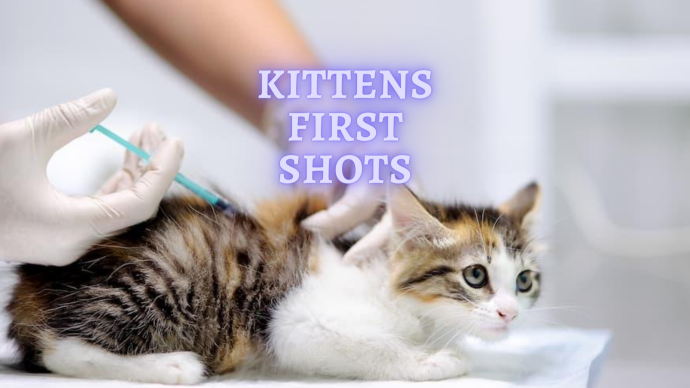 Cat Veterinary Tips Kittens First Shots: When do Kittens get their First Shots?
Cat Veterinary Tips Kittens First Shots: When do Kittens get their First Shots? - 500
- 0
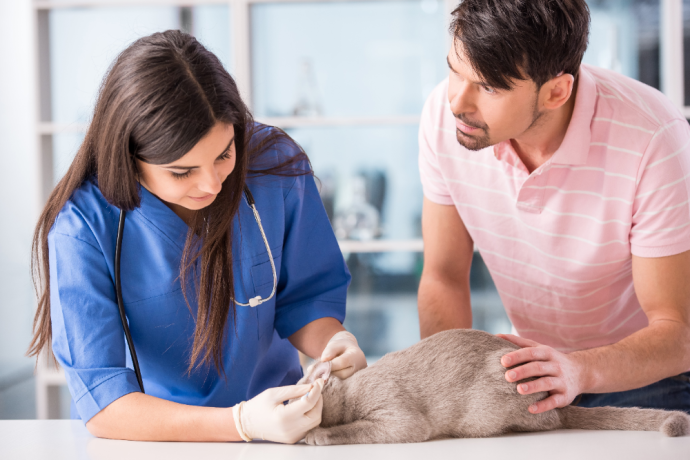 Cat Veterinary Tips Cat Fleas and Ticks: How to get rid of Fleas on Cats? (Vet Advice)
Cat Veterinary Tips Cat Fleas and Ticks: How to get rid of Fleas on Cats? (Vet Advice) - 173
- 0
 Cat Care Why Does My Cat Attack My Legs? 10 Reasons Why and What To Do About It (Vet-Approved Advice)
Cat Care Why Does My Cat Attack My Legs? 10 Reasons Why and What To Do About It (Vet-Approved Advice) - 45566
- 21
 Cat Veterinary Tips Cat Stomach Gurgling: Vet Advice on Why is Your Cat Stomach Gurgling?
Cat Veterinary Tips Cat Stomach Gurgling: Vet Advice on Why is Your Cat Stomach Gurgling? - 35340
- 4
 Cat Veterinary Tips My Cat Lost its Voice: Can Cats get Laryngitis? (Vet Advice)
Cat Veterinary Tips My Cat Lost its Voice: Can Cats get Laryngitis? (Vet Advice) - 23247
- 13











